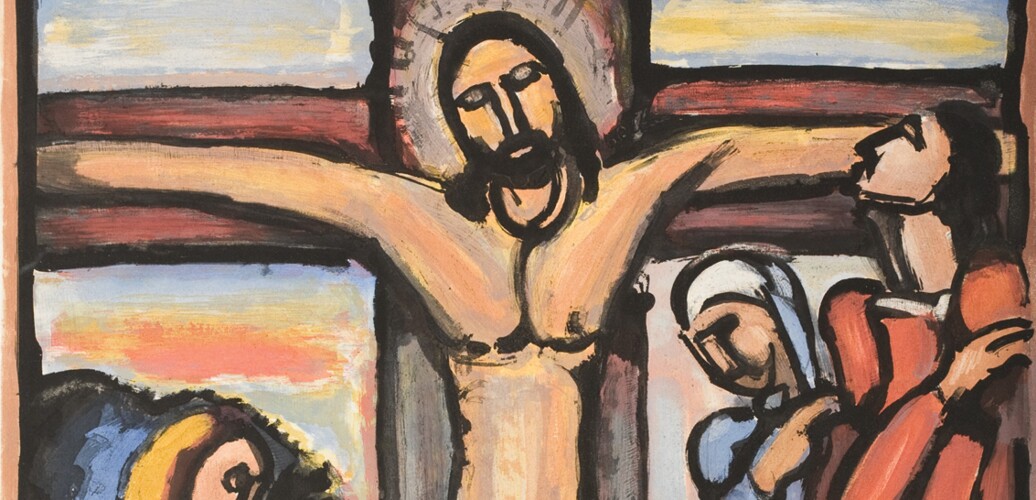Luminous shards of color infuse this image of Christ with brilliance and passion, emphasizing the redemptive power of the Crucifixion. Though this scene is one of grief as disciples mourn Jesus, the promise of rejoicing and Christ’s triumph can be glimpsed as radiant color of the sun breaks through the horizon.
Artists through the centuries have imagined the immense weight and emotion of the Crucifixion in innumerable examples. Crucifixion images are the most frequently created Passion scenes in the history of art. Early historical examples tend to stress the divinity of Christ, with later modern examples emphasizing his humanity. Here, we experience the overwhelming reality of Jesus’ human body on the cross. The artist summons acute emotion as Jesus fills the entire span of this artwork, his body looms before us, laden with his sacrifice and the weighty meaning of this moment.
Georges Rouault worked in a style called expressionism, which sought to express the human experience through art. French Expressionist artists spoke in a visual language of color, communicating the depths of emotion and spirituality from their own personal feelings and perceptions. Color shaped this artist from an early age; Rouault apprenticed in a stained-glass workshop, an influence evident in the saturated color and thick black outlines in this image.
Here, color may have a particularly important meaning; the Gospels describe that darkness swept across the sky as Jesus died on the cross, leading to many Crucifixion scenes filled with darkened skies. Rouault saw the Crucifixion as a symbol of love and sacrifice for humanity, and he presents this image in that spirit. The vitality of Christ’s message and sacrifice glows from the jewel-like colors the artist uses; as vivid orange and yellow-gold hues emanate from behind the cross, light and hope abound from Christ.
Rouault’s devout faith clearly informed the moving religious content in much of his artwork. He revived traditional religious imagery by evoking emotional responses to his artwork. Here, Christ is not alone. As he loved, even while dying, he is surrounded and loved by his disciples. Fittingly, this work has an alternate title; “That Ye Love One Another (Aimez-vous les uns les autres).” This title is in reference to John 13: 34-35, when Jesus offers a new commandment to his disciples to love one another. Such a poignant reminder that Christ’s Crucifixion is the ultimate sign of love for humanity, and a reminder that we honor God and this sacrifice by truly loving one another.

Joanna Reiling Lindell is the director and curator of the Thrivent Art Collection (thriventcollection.com)




